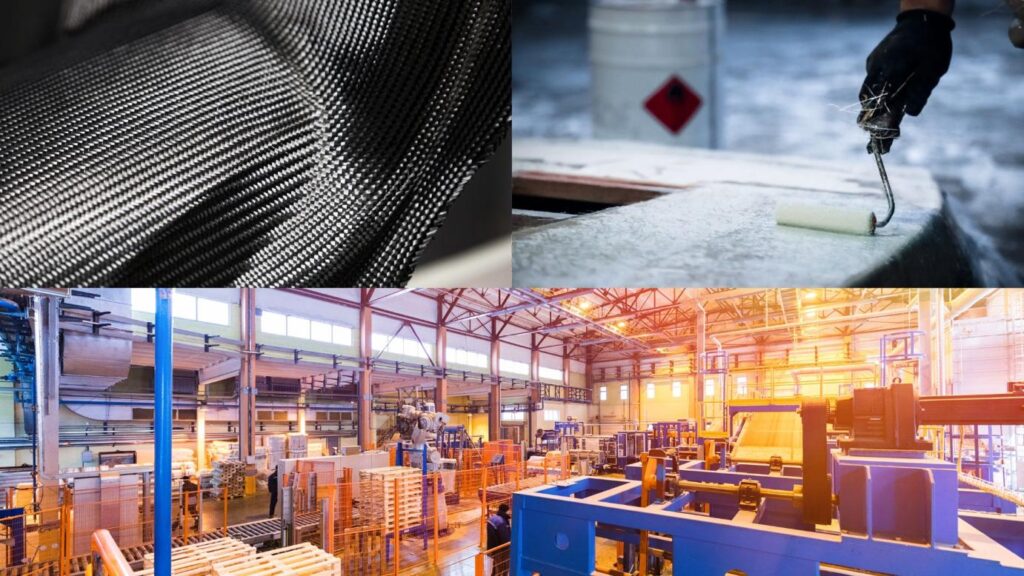
Composite Materials for Green Transition
The global push towards a greener future has become more imperative than ever. As we strive to mitigate the effects of climate change and reduce our carbon footprint, the development and utilization of sustainable materials have gained significant attention. One such class of materials that holds tremendous promise is composite materials. In this article, we will explore the role of composite materials in the green transition, their advantages, applications, challenges, and future outlook.
- What are Composite Materials?
Composite materials are engineered materials made by combining two or more constituent materials with significantly different physical or chemical properties. The resulting composite possesses unique characteristics that are superior to those of its individual components. Typically, composite materials consist of a reinforcing phase, known as the filler or reinforcement, embedded within a matrix material. The combination of these materials results in a synergistic effect, enhancing overall performance.
- Importance of Green Transition
The green transition is a paradigm shift towards sustainable practices and technologies that aim to minimize environmental impact while promoting economic growth. It involves transitioning from fossil fuel-dependent systems to renewable energy sources, reducing greenhouse gas emissions, and adopting sustainable manufacturing processes. The green transition is crucial for preserving our planet’s resources, mitigating climate change, and creating a better future for generations to come.
- Role of Composite Materials in Green Transition
Composite materials play a pivotal role in the green transition by offering a sustainable alternative to traditional materials. Their unique properties make them highly suitable for various applications in renewable energy, transportation, and construction sectors, among others. By harnessing the capabilities of composite materials, we can achieve energy efficiency, reduce environmental impact, and drive innovation in green technologies.
- Advantages of Composite Materials for Green Transition
4.1 Lightweight and High Strength
Composite materials are renowned for their exceptional strength-to-weight ratio. Compared to traditional materials such as steel or concrete, composites are significantly lighter while maintaining equivalent or even superior strength. This characteristic makes them ideal for applications where weight reduction is essential, such as in wind turbine blades, electric vehicles, and lightweight structures in buildings.
4.2 Durability and Resistance to Corrosion
Composite materials exhibit excellent durability and resistance to corrosion, making them highly suitable for harsh environments. Unlike metals, composites do not rust or degrade when exposed to moisture, chemicals, or extreme temperatures. This property extends the lifespan of structures, reduces maintenance requirements, and contributes to overall sustainability.
4.3 Energy Efficiency
The lightweight nature of composite materials directly translates into improved energy efficiency. In the transportation sector, for instance, the reduced weight of composite components enables vehicles to consume less fuel or electricity, resulting in lower emissions and operating costs. Moreover, in the renewable energy sector, composite materials increase the efficiency of wind turbine blades and solar panels, leading to enhanced power generation.
4.4 Reduced Environmental Impact
Composite materials can be manufactured using sustainable processes and eco-friendly materials. The production of composites typically involves lower energy consumption and fewer greenhouse gas emissions compared to traditional materials. Additionally, some composites can be recycled, further reducing their environmental footprint and contributing to a circular economy.
- Applications of Composite Materials in Green Transition
5.1 Renewable Energy Sector
Composite materials find extensive use in the renewable energy sector. Wind turbine blades, for example, are predominantly made from composites due to their lightweight, high strength, and aerodynamic properties. Solar panels also benefit from the lightness and durability of composites, enabling easier installation and prolonged lifespan.
5.2 Transportation Industry
The transportation industry is rapidly adopting composite materials to improve fuel efficiency and reduce emissions. Electric vehicles, in particular, benefit from the lightweight nature of composites, allowing for longer driving ranges and enhanced battery life. Composites are also utilized in aerospace applications, where weight reduction is critical for achieving optimal fuel consumption.
5.3 Building and Construction
In the construction sector, composite materials offer a sustainable alternative to conventional materials. Composite panels, for instance, provide excellent thermal insulation, reducing energy consumption for heating and cooling. Moreover, composites offer design flexibility, enabling the creation of complex and lightweight structures that are both aesthetically pleasing and environmentally friendly.
- Challenges and Future Outlook
While composite materials offer numerous advantages for the green transition, they also present challenges that need to be addressed. Cost remains a significant barrier, although ongoing research and technological advancements are gradually reducing the price gap between composites and traditional materials. Additionally, recycling techniques for composite materials need further development to ensure a closed-loop system.
Looking ahead, the future of composite materials in the green transition appears promising. Continued research and innovation will drive the development of novel composites with enhanced properties and increased sustainability. Collaboration between industries, academia, and policymakers is crucial to accelerate the adoption of composite materials and realize a greener and more sustainable future.
Composite materials are at the forefront of the green transition, offering immense potential for achieving sustainability goals across various industries. Their lightweight, high strength, durability, and energy-efficient properties make them indispensable in renewable energy, transportation, and construction sectors. While challenges exist, ongoing advancements and concerted efforts will pave the way for a greener and more sustainable future powered by composite materials.
- What are some examples of composite materials used in green transition?
- Examples of composite materials used in the green transition include carbon fiber composites, fiberglass composites, and bio-based composites.
- Are composite materials more expensive than traditional materials?
- Composite materials can be more expensive than traditional materials initially, but their long-term benefits such as durability and energy efficiency often outweigh the initial cost difference.
- How do composite materials contribute to sustainability?
- Composite materials contribute to sustainability by reducing weight, improving energy efficiency, and offering resistance to corrosion, leading to reduced environmental impact and resource conservation.
- Can composite materials be recycled?
- While recycling composite materials is still a developing field, significant progress has been made in recycling certain types of composites. Research efforts are focused on developing efficient and cost-effective recycling techniques for broader adoption.
- How can I learn more about composite materials for green transition?
- You can learn more about composite materials for the green transition by exploring academic research papers, industry publications, attending conferences or workshops, and engaging with experts in the field.








